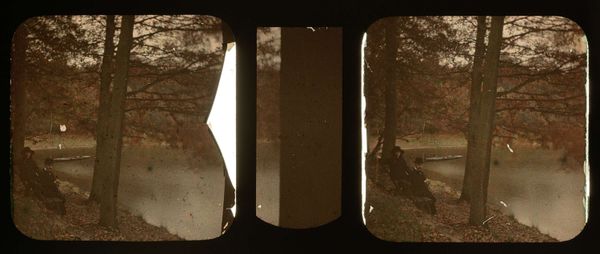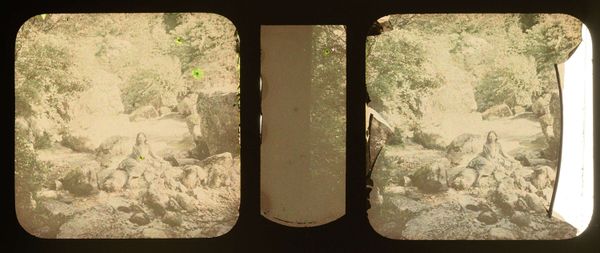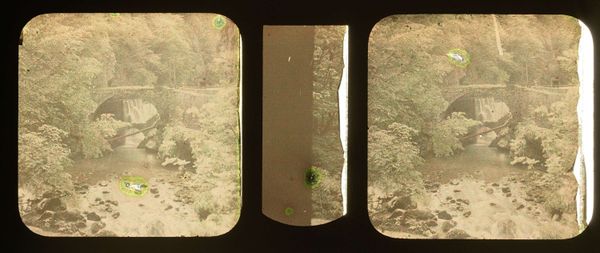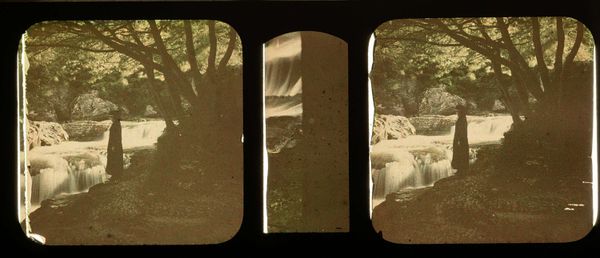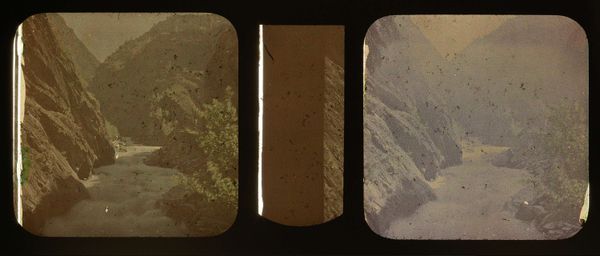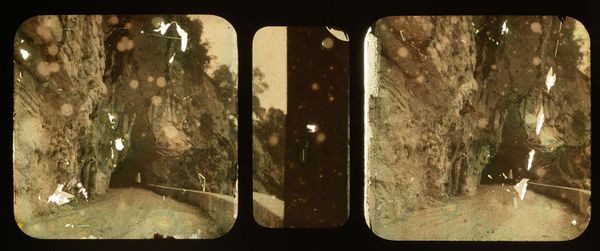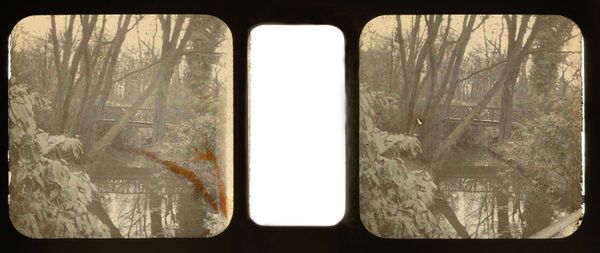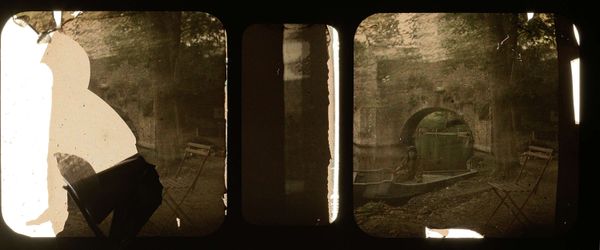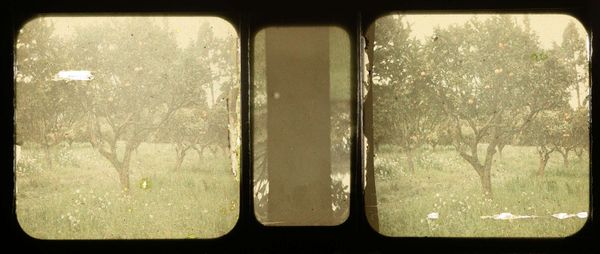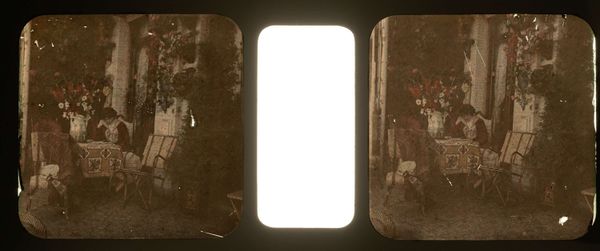
print, photography, gelatin-silver-print
# print
#
landscape
#
street-photography
#
photography
#
mountain
#
gelatin-silver-print
#
watercolor
#
realism
Dimensions: height 75 mm, width 150 mm
Copyright: Rijks Museum: Open Domain
Curator: Here we have "Weg in de bergen naast een beek," or "Road in the Mountains Next to a Stream" by Adolphe Burdet. The gelatin-silver print, housed at the Rijksmuseum, dates from 1907 to 1935. Editor: My initial impression is a quiet melancholy, almost a cinematic feel despite its age. The monochromatic tones highlight a road tracing its path along a rocky riverbed and climbing towards a mountainous horizon. There's something about the starkness that captures me. Curator: The photograph, to me, seems to evoke a specific moment in Swiss history when the Alps, formerly perceived as a dangerous sublime landscape, were becoming accessible tourist destinations. Notice the carefully constructed road – a clear indicator of man’s ambition to conquer nature, but also opening avenues of commerce. Editor: Yes, the road! It is clearly laid brick and speaks of infrastructure projects and labor. Look closely at the details. I imagine the crews involved in grading the path and facing potential risks. The physical demands of it. I would say, it speaks to the connection between landscape and labor. Curator: Absolutely. Moreover, consider who gets to traverse this road. During that era, it would be predominantly upper-class travelers enjoying the picturesque views. What does the construction of this infrastructure say about class structures dictating who gets to interact with and benefit from these spaces? Editor: Good point. We should not forget about how nature can become commodified! Still, focusing on just the landscape the composition makes excellent use of light, casting subtle variations on stone and water, giving a tactile feeling, a texture which can trick the eye. The actual gelatin silver method, requiring great care in preparing and printing, lends such remarkable detail. Curator: I see it a bit differently. The choice to highlight the stream could serve to highlight a symbol of constant movement. The rapid progress of the industrial age cutting through these once untouched locations. The romanticizing is an easy trap to fall into, hiding that fact the land isn’t this inherently available resource. Editor: Perhaps we meet in the middle then? There are complexities at play, as it shows the process by which raw material has come into contact and relationship between nature and humans through manufacturing a material, silver, by applying this process to showing nature through art! Curator: Fair enough. By framing the photograph in its time, with all its class, access, and ambition for resource manipulation, that is where its value exists, even for today's audiences. Editor: I agree! Considering that "Weg in de bergen naast een beek" shows laboring hands manipulating materials to then capture it with a photo, its an undeniable demonstration of landscape engagement for today.
Comments
No comments
Be the first to comment and join the conversation on the ultimate creative platform.
